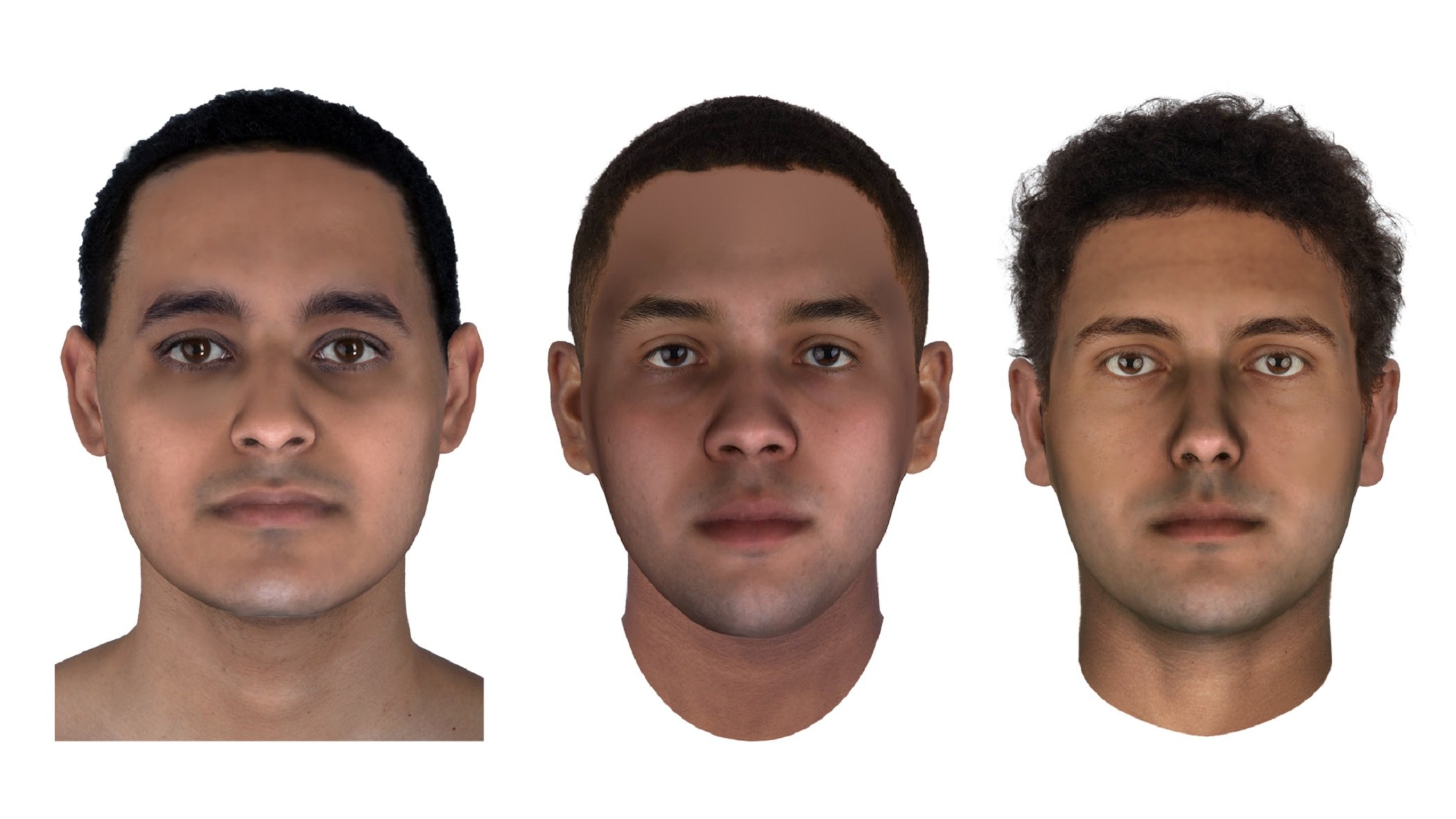
A team of forensic researchers have digitally reconstructed the faces of three ancient Egyptian males, each more than 2,000 years old, using DNA samples culled from their mummified remains.
Experts at the Virginia-based technology company Parabon NanoLabs used DNA phenotyping—or a scientific process for determining an organism’s physical attributes from their genetic makeup—to project the men’s facial features and skin color at age 25. From there, the company’s forensic artist synthesized these predictions into 3D images of the individuals, which look like characters from a sophisticated video game.
The company said in a statement that its researchers believe “This is the first time comprehensive DNA phenotyping has been performed on human DNA of this age.” They presented their work at the International Symposium on Human Identification last month.
Buried between 1380 B.C. and A.D. 425, the three individuals hailed from the ancient Egyptian city of Abusir el-Meleq. DNA from their bodies, now publicly available, was sequenced by scientists at the Max Planck Institute for the Science of Human History and the University of Tubingen in Germany in 2017, marking the first time an Egyptian mummy’s genome had been successfully re-created.
Parabon’s recent facial reconstructions, which depict the men with light brown skin and dark eyes and hair, help to illustrate the central finding from the Max Planck scientists’ work four years ago: that the genetic makeup of ancient Egyptians is more closely related to that of modern-day individuals in the Mediterranean or the Middle East than it is to contemporary Egyptians, who tend to have more Sub-Saharan DNA.
“It’s great to see how genome sequencing and advanced bioinformatics can be applied to ancient DNA samples,” said Dr. Ellen Greytak, Parabon’s director of bioinformatics. “These techniques are revolutionizing ancient DNA analysis.” Parabon’s technology has also been used to augment forensic evidence in police investigations and solve cold cases.